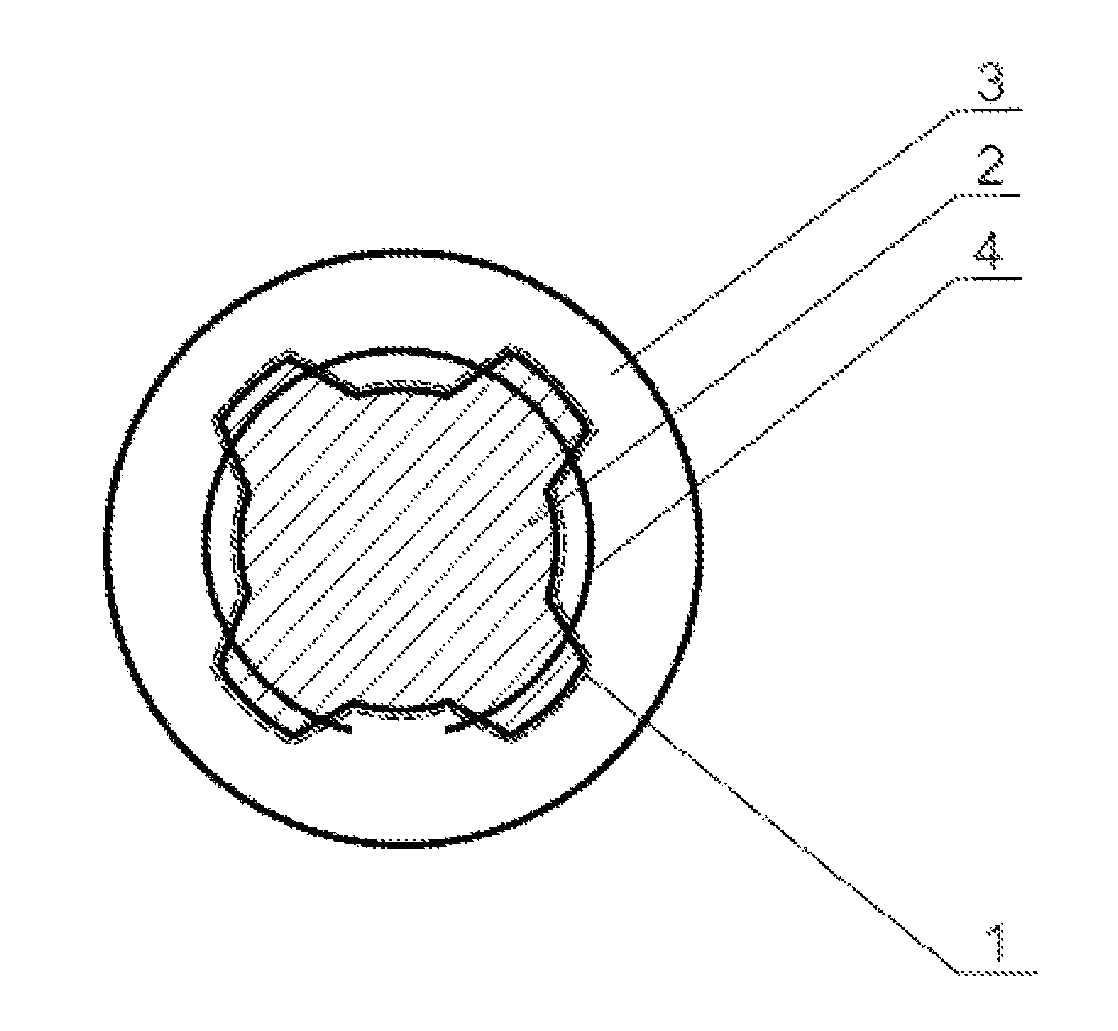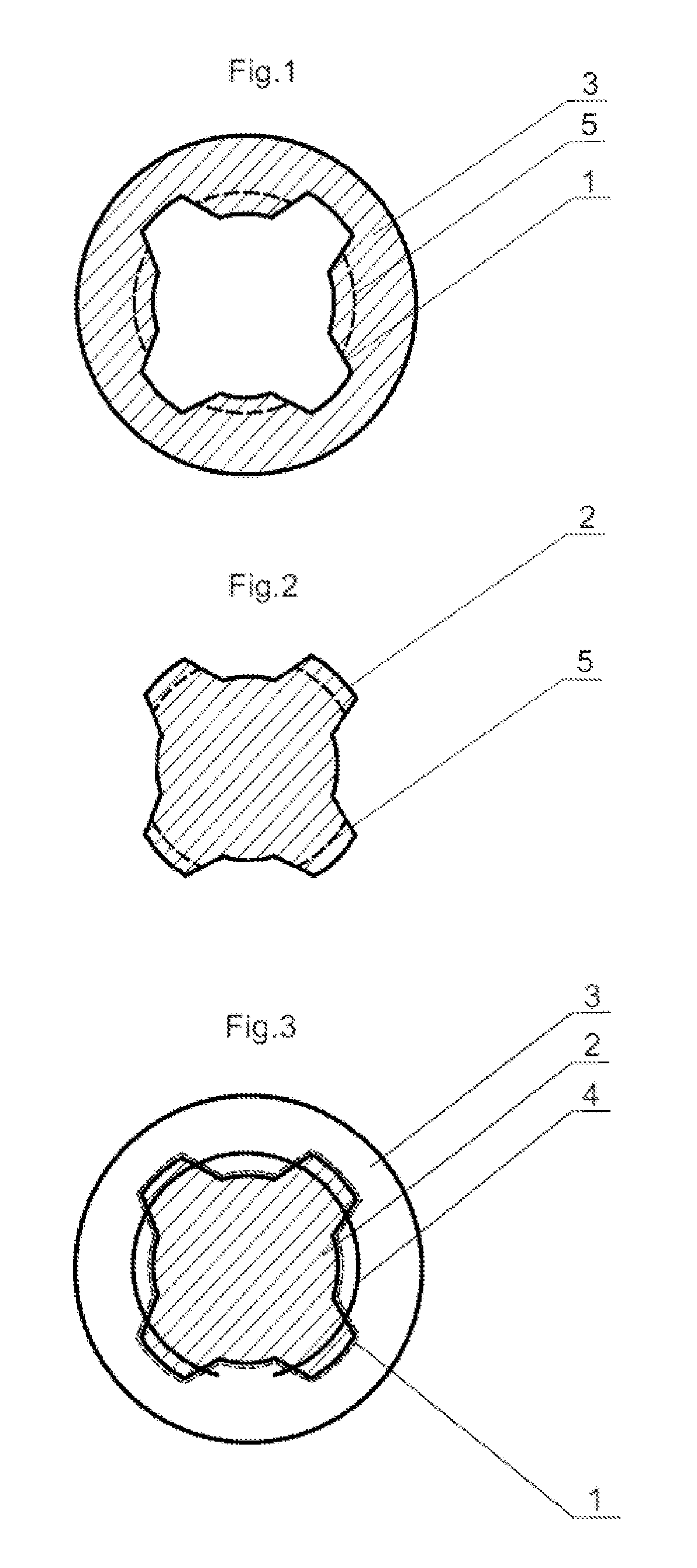Method and implant for attachment of the transplanted cornea
a corneal transplantation and implant technology, applied in the field of methods and implants, can solve the problems of insufficient wound tightness, time-consuming and less precise, and increased risk of infection-related complications and inflammation
- Summary
- Abstract
- Description
- Claims
- Application Information
AI Technical Summary
Problems solved by technology
Method used
Image
Examples
Embodiment Construction
[0010]The invention-based transplant cornea attachment method consists in the cutting of a fragment of the donor (2) and recipient tissue (1) using femtosecond laser or other laser with similar properties so that the donor tissue (2) has kind of teeth that mesh with teeth of recipient (1) tissue. A circular incision (5) is made in the donor and recipient corneal stroma creating a type of an intrastromal tunnel where a fastening implant (4) is then inserted allowing the interlocking parts of the tissue to remain connected with each other; the ring-shaped tunnel must be less in diameter in the donor tissue and more in diameter in the recipient tissue so as to ensure tight attachment of the tissues.
[0011]The invented implant is made of biocompatible elastic material (e.g. polymethylmetacrylate) and has shape resembling an open ring or its part thus ensuring firm fastening between the meshing corneal tissues of the donor and recipient.
[0012]The advantage of the invention-based solution ...
PUM
 Login to View More
Login to View More Abstract
Description
Claims
Application Information
 Login to View More
Login to View More - R&D
- Intellectual Property
- Life Sciences
- Materials
- Tech Scout
- Unparalleled Data Quality
- Higher Quality Content
- 60% Fewer Hallucinations
Browse by: Latest US Patents, China's latest patents, Technical Efficacy Thesaurus, Application Domain, Technology Topic, Popular Technical Reports.
© 2025 PatSnap. All rights reserved.Legal|Privacy policy|Modern Slavery Act Transparency Statement|Sitemap|About US| Contact US: help@patsnap.com


